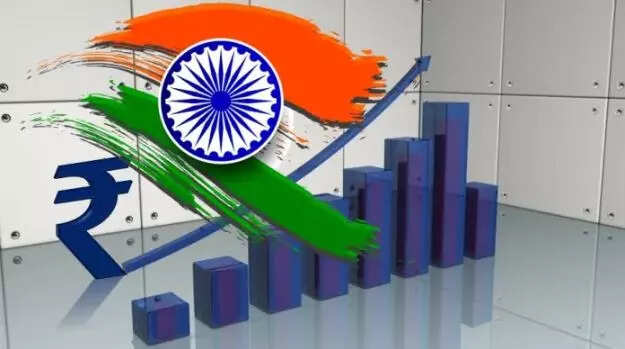
In what may be joining the dots with the earlier measures in response to the re-emergence of the twin deficit, along with high inflation, rising rates, and fast-declining forex reserves, the government of India (GoI) this week announced two more measures.
First, it hiked the export duty on petrol/ATF (INR 6/ltr), diesel (INR 13/ltr) and on crude (INR 23,250/ton). Second, from now on gold imports will attract higher custom duty (15% vs. 10.75% earlier).
Earlier, a ban was imposed on wheat exports and a 15% export duty on steel in an attempt to temper domestic inflation.
In addition, excise duty on petro products was reduced, translating into forgone tax revenue and fertilizer and food subsidies were scaled up. They together are estimated to widen the fiscal gap by an additional Rs 3 trillion.
We estimate further burden from under-recovery of oil companies, and higher interest costs on public debt would mean a potential total slippage of Rs 4.6 trillion or 1.8% of GDP.
GST collections have been robust (Rs 1.45 trillion in June 2022) clocking above Rs 1.4 trillion for the 5th consecutive month. But this is only marginally higher than the centre’s budgeted target of Rs 7.8 trillion collections for FY23E or a budgeted monthly run rate of Rs 1.3 trillion.
Thus, it is getting clearer that not only the monetary policy conduct but also the fiscal management is getting challenging.
RBI is faced with a potential sharper depreciation in the rupee and an additional drain of $40-50 billion from the forex reserves balance, which at $590 billion is already down $52 billion from last year’s peak.
The imposition of import duty on gold imports is an attempt to narrow the current account deficit gap, which is projected to rise to 3.3% of GDP in FY23E assuming crude at $100/bbl; with crude at $110-120, the risk is on the higher side.
This could be larger than the projected funding through capital account deficit/GDP at 1.5-2% in FY23E.
A sharper depreciation of INR/USD to 80-82 levels can accentuate the rise in G-sec yields even as market borrowings are expected to be much larger than the budgeted Rs 11.2 trillion.
Simultaneously, the banking sector surplus liquidity has declined sharply from the peak of 5.4% of bank deposits last year to around 1.4% now.
This trend is likely to continue due to a decline in the money multiplier and will reduce the market appetite for large G-sec issuance.
The imposition of export duty on oil products is estimated to garner Rs 655 billion on an annual basis. But it comes as a detriment to corporate profits, just like the earlier move to impose a 15% export duty on steel has made steel exports uneconomical, thereby increasing inventory level and depressing price realization for steel players in the domestic markets.
Similarly, the imposition of the ban on wheat exports came at the cost of foregone revenue by farmers from higher export prices.
Thus, government reaction to high inflation has resulted in a potentially high fiscal deficit, which in turn is getting partly borne by households and corporates.
Potential larger fiscal slippage may also force curtailment of budgeted spending as we saw in 1HFY20 as a following of tax collection shortfall of Rs 1.7 trillion in FY19, which was made good later by transfer of reserves from RBI’s balance sheet.
The Centre has budgeted flat (0.86% YoY) revenue expenses for FY23BE, while capex growth of 24.5% YoY.
At the state government finances level, the discontinuance of GST cess compensation may result in revenue shortfalls. RBI’s recent study has highlighted the deteriorating fiscal situation of 10 states among which the situation in Bihar, Kerala, Punjab, Rajasthan, and West Bengal is even worse with the FD/GSDP ratio (3.5%) exceeding acceptable levels (3%).
Thus, there is a potential of capex allocations to be compromised at state government levels also.
It is hoped that a hike in GST rates on certain products and withdrawal of exemptions will partially make up for the losses due to the discontinuance of the GST compensation cess.
Gold imports have surged from $1 billion (Mar’22) to $6 billion (May’22), while India’s trade deficit has widened from $18.5 billion to $24.2 billion.
We believe such measures may be very temporary as past experiences show that any substantial hike in import duty on gold leads to an increase in imports through unethical routes.
Overall, the government appears to be taking reactionary measures to temper the multiplicity of macroeconomic challenges along with the RBI.
Attainment of macro stability appears to be the primary goal, as was the case in 2013 when India also faced the twin deficit problem along with high inflation in the wake of the US Fed taper tantrum shock.
This time the problem is tricky as a) heading into the current imbalances, the structural growth is lower (2% on a three-year CAGR basis), and b) fiscal deficit/GDP and public debt/GDP is much higher due to the COVID impact. But thankfully the Indian banking sector is much more strongly capitalised now.
Thus, it is very likely that if macro imbalances intensify, there might be further fiscal measures to spread the burden in the economy. This may come in the form of higher tax rate imposition on both corporates and wealthy individuals.
Such fiscal drags can slow the economy and impact corporate performance, thus fortifying our view of slower economic growth in 2-4QFY23 of 4% or lower and 15-20% cutback in the optimistic consensus earnings projections for FY23 (and FY24) for Nifty50 companies.
In our view, there is also a possibility of India launching another series of NRI bonds or deposits to make good the depleting forex reserves with the RBI.
(Disclaimer: Recommendations, suggestions, views, and opinions given by the experts are their own. These do not represent the views of Economic Times)